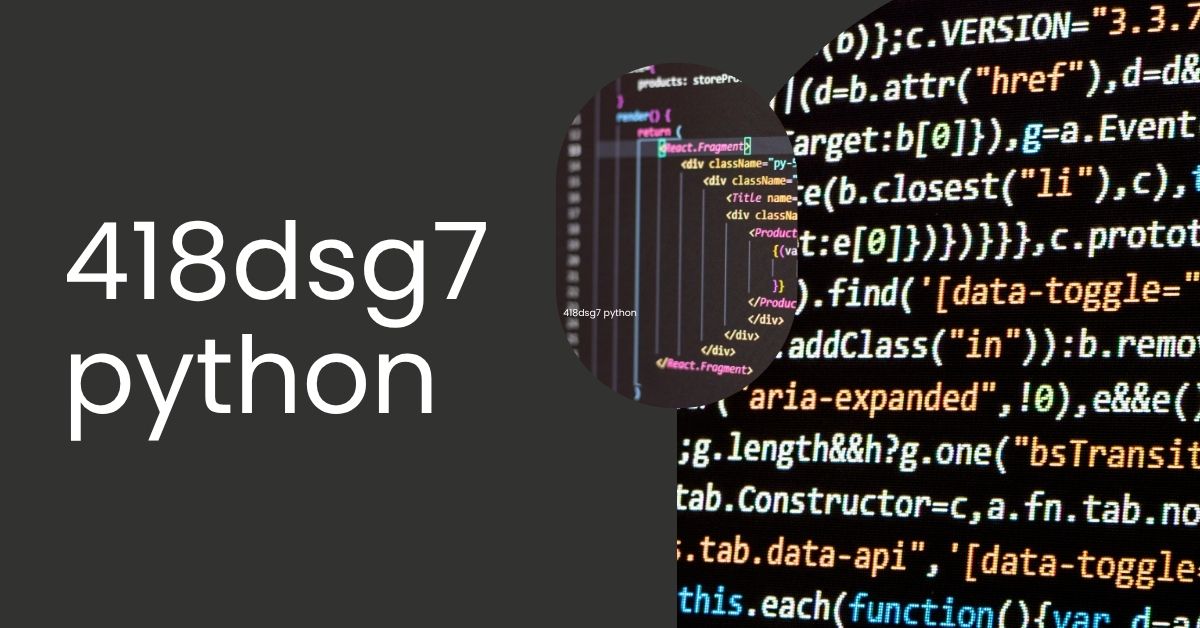education
How to Start an Essay About Yourself? 10 Tips with Examples

Ever wonder how to start an essay about yourself that can engage the reader, set the target tone, and also feel genuine to others? Although sharing your own story seems like a breeze at first, when you sit down to write, everything hangs in the air above a blank page. With so much to talk about, students often get stuck on where to begin to make the first impression impactful and winning.
UCAS states that while writing a personal essay, you can enhance the chances of success by showing your passion for the subject you are applying for and discussing your goals for the future. So, whether you are presenting yourself to win a scholarship or get admission, it is the start of your essay that decides the fate of everything that follows.
In this article, we will share ten effective tips and tricks that will help you understand how to start an essay about yourself the right way. So, let’s dive into building your essay with confidence!
10 Practical Tips to Start an Essay About Yourself
It might be difficult to start an essay about yourself because presenting yourself in an essay needs to be both interesting and distinctive. In this journey, the first step of your essay is the most crucial, so try to make it as engaging as possible. However, there are some students who struggle in presenting their own story and often seem to be looking for “how to start an essay about yourself for college”. In such cases, it’s wise to seek help from experts. Reaching out to British essay writing services online can significantly boost your chances of success with these critical tasks.
The following ten professional suggestions, along with examples, can help you in creating an impactful and unique beginning.
1. Begin With a Hook
The opening sentence of your essay should be able to catch the attention of readers. It is quite similar to an opening scene of a movie; a hook sentence can grab their interest and motivate them to read more of your essay.
For Instance, at the age of ten years, I thought I could communicate with dolphins. I recognised my interest in marine biology from that unique idea.
The following are a few tips for this idea:
- You should begin with random personal information.
- You have to use a clear recollection or image.
- You should ask a captivating question.
- You should try making funny or bold comments.
2. Know Your Purpose Before You Begin
Wondering how do you start a self-essay? Firstly, you should determine the objective of your essay, whether it is to inform, reflect, or persuade. It can help you establish the appropriate tone and will influence how you portray yourself in your essay.
The following are a few tips for this idea:
- You should define your goal, if you want to focus on self-analysis, narrative, or personal branding.
- You have to be real for personal writing and professional for employment.
- You should focus on qualities that meet the expectations of your audience.
Example:
When I applied for a STEM scholarship, I wanted to focus not only on my academic achievements but also on how a paper telescope triggered my interest in space.
3. Use a Relevant Personal Story
As you know, stories help people remain connected, so you should carefully select a life event from your personal moments. It might provide a more compelling explanation of your identity and values than a list of your characteristics. So, how to start an essay about yourself for a scholarship in a way that can ensure your success? Follow the example and tips below:
The following are a few tips for this method:
- You should choose a life-changing event that influenced you.
- You have to connect the narrative to the main idea of your essay.
- Keep it brief and targeted.
Example:
When I fixed my old bicycle with a broken chain for the first time in my life, I had no idea that I was starting down the journey to becoming a mechanical engineer.
4. Avoid Starting With Clichés
You have to avoid using cliched introductions such as “My name is…” or “I was born in…” Instead, you want to blend in; you should stand out, as these types of introductions are known as overused and often dull.
The following are a few tips for this method:
- You should avoid using formal or clear statements.
- You can use terminology instead of cliches.
- You have to demonstrate your story rather than just telling.
Example (Weak):
I had big dreams growing up, even though I was born in a small town.
Example (better):
I dreamed of designing buildings when I was growing up, looking out over countless rice fields.
6. Keep It Personal But Professional
Even though your short essay about myself presents you as a huge personality, it should be well written and appropriate for the context. Your voice should be ideal yet genuine while applying for a job or college.
Still looking for how to start an essay about yourself? The following are a few tips for this method:
- You can be conversational with them, but avoid using slang phrases.
- You should maintain your language politely and positively.
- You should be real instead of posting what you believe other people want to hear.
Example:
I have always enjoyed solving puzzles, including arithmetic problems and crosswords. It seems like revealing a piece of myself when I solve them.
7. Start With a Thought-Provoking Question
Asking a question may grab the interest of readers and encourage them to learn more about the world you describe. Just be sure that the essay finally provides a kind of solution. Remember that your best essay must be capable of impressing the teachers, class fellows, or admission committee so that you can win over other competitors.
The following are a few tips for this method:
- You have to add a specific and personal question.
- Avoid using philosophical or confusing questions.
- Make sure it has a direct connection to your narrative.
Example:
During the school debate tournament, I learnt that when your voice vibrates throughout every presentation, what does it mean?
8. Keep Your First Paragraph Concise
How to start an essay about yourself when you have so much in mind to talk about? You should not exaggerate the initial paragraph, even though your story is crucial. You have to establish the scene instead of revealing the conclusion at first.
The following are a few tips for this method:
- You should limit your paragraph to four or six well-chosen sentences.
- Avoid using long background information at once.
- You should provide just enough information to keep your reader interested.
Example:
When I walked onto the basketball court in front of many people, I felt the heat of the spotlight and the weight of my fear.
9. Use Emotion—but Don’t Overdo It
While your emotions and personal development are important, balancing them is also vital. Both too little and too much drama might come out as disconnected and unreal.
The following are a few tips for this method:
- You should be honest and avoid being too emotional.
- You have to think about the ways that emotions have shaped you.
- Must show your knowledge and growth.
Example:
I felt the setback and wept behind the gym when I did not make the squad. This setback motivated me to work harder in my training, and I was back as captain in the very next year.
10. Preview What’s to Come
Your search for how to start an essay about yourself should end here by providing a preview of the topics of the essay to your audience. This will increase interest and demonstrate that your article is well structured.
The following are a few tips for this method:
- You should add the names of a couple of themes or experiences.
- You should avoid using too much information and remain careful.
- You have to relate the preview to your story or narrative.
Example:
“From planting trees in my village to coding apps in my room, my journey has been about building things that last—and learning who I am in the process.”
How Do You Write an Essay About Introducing Yourself?
Leverage Edu states that to introduce yourself in an essay, you must make a strong and impactful opening that can clearly describe your goal as well. After that, mention your key information like name, roll number, age, background, achievements, and some insights into your values and life experiences. Moreover, you should try to be straightforward and sincere in your tone and finish it with a compelling, well-considered conclusion.
How Do You Start Writing About Yourself?
According to Scholarship Owl, the first step to writing about yourself is to brainstorm different ideas and think about what your special qualities are that make you stand out from others. You should start your essay meaningfully in an engaging way that forces the reader to go through your whole writing. But do not exaggerate anything to the point that you lose your voice or interests.
Conclusion
No doubt, writing an essay about yourself often seems an easy task to students as you are the master to better presenting your own story. However, the real struggle begins when you start writing and face writer’s block with a blank mind. This is where you look for how to start an essay about yourself that can make your work shine. To assist you in this journey, we have covered an easy 10-step guide, starting with a hook to building an engaging story with the true reflection of your personality traits.
Along with these, try to make your essay as simple and professional as you are. However, if you face any difficulty in presenting a strong narrative of yourself, you can contact top-rated essay writing firms in the UK for additional support. They have expert essay writers who not only make your beginning more curious and relevant but also reflect your unique voice throughout the essay.
So, whether you write it by yourself, following this guide, or take professional assistance, you will be on your way to achieving academic excellence in your personal essay!
Author Bio
Holly P. Reed is an experienced academic expert and an essay writer serving the educational industry for more than 6 years. She has achieved excellence in multiple essays with her keen observation and great writing skills. She also guides students on how to start an essay about themselves in an engaging way that can make their essay truly shine.
ALSO READ: How Long Does It Take to Prepare for the PTE Exam?
education
Exploring 418dsg7 Python: A Revolution in Coding Efficiency

In the world of programming and automation, Python has long stood as one of the most flexible, powerful, and user-friendly languages. However, as developers strive to push boundaries, newer frameworks, tools, and modules emerge—each enhancing Python’s potential further. One such notable innovation making waves among programmers and data scientists is 418dsg7 Python.
This concept combines optimized code performance, advanced libraries, and seamless automation to redefine what Python can achieve in modern computing. Whether you’re a beginner exploring coding or an expert developing scalable solutions, understanding 418dsg7 Python can open doors to faster, more efficient programming.
Understanding the Concept of 418dsg7 Python
418dsg7 Python is not just a standard Python version or a single framework—it represents an evolved approach to Python programming that integrates high-performance coding techniques with advanced computational capabilities. It is a code model or structured setup that focuses on maximizing execution speed, simplifying syntax handling, and improving development productivity.
This unique adaptation leverages Python’s open-source nature to create an ecosystem where complex algorithms can run efficiently with minimal system load. In essence, 418dsg7 Python stands for performance-driven, scalable, and optimized programming.
Evolution of Python Toward 418dsg7-Level Performance
Python has always been known for its simplicity and readability, but one of its long-standing challenges has been execution speed. Traditional Python, being an interpreted language, sometimes struggles with performance-intensive tasks like real-time AI processing or large-scale data analytics.
The emergence of 418dsg7 Python aims to address these limitations. By integrating advanced compilers, optimized libraries, and parallel processing techniques, this model ensures that developers can write clean Python code that executes faster than before. Over time, enhancements like Just-In-Time (JIT) compilation, Cython integration, and GPU acceleration have paved the way for the 418dsg7 structure—bridging the gap between simplicity and power.
Core Features of 418dsg7 Python
418dsg7 Python incorporates several innovative features that make it stand out among traditional Python frameworks. These features are designed to enhance performance, flexibility, and developer productivity.
- Optimized Execution Engine:
The core of 418dsg7 Python includes a refined execution layer that reduces memory overhead and accelerates code processing. - Modular Architecture:
Developers can use modular components to build, test, and deploy applications efficiently without compromising scalability. - AI-Ready Framework:
418dsg7 Python integrates seamlessly with AI and machine learning libraries like TensorFlow, PyTorch, and Scikit-learn, allowing for faster model training and testing. - Parallel Processing Support:
The system takes full advantage of multi-threading and multi-core architectures, improving computation time for large datasets. - Enhanced Syntax Interpretation:
A cleaner, error-resistant syntax parser makes it easier to debug and manage complex code structures.
These features make 418dsg7 Python an ideal environment for developers who demand both performance and simplicity.
Why Developers Are Adopting 418dsg7 Python
Developers around the world are embracing 418dsg7 Python for its unique ability to combine Python’s ease of use with advanced processing capabilities. The model helps in speeding up workflows, especially in industries where precision and speed are critical—like data science, AI engineering, and cloud automation.
Additionally, the modular approach allows teams to collaborate seamlessly, integrate multiple APIs, and create scalable back-end systems with minimal code duplication. Its stability and adaptability have made it a preferred choice for organizations migrating to cloud-native infrastructures or building AI-driven applications.
Integration with Modern Technologies
418dsg7 Python’s compatibility with modern tools and technologies makes it a versatile choice for developers. It works efficiently with popular frameworks and services, extending its usability beyond traditional programming.
For instance, it supports integration with:
- Docker and Kubernetes for cloud-based containerization and deployment.
- TensorFlow and PyTorch for AI and deep learning projects.
- Pandas, NumPy, and SciPy for large-scale data analytics.
- Flask and FastAPI for building robust web applications.
- AWS Lambda and Google Cloud Functions for serverless execution.
This deep integration means developers can build end-to-end systems without leaving the Python environment, ensuring consistency and ease of maintenance.
Performance Improvements in 418dsg7 Python
One of the standout advantages of 418dsg7 Python is its superior performance optimization. By using modern compiler techniques and leveraging Python’s C extensions, the model minimizes execution delays and boosts speed.
Through smart caching, memory allocation management, and asynchronous execution, 418dsg7 Python can outperform traditional setups by a significant margin. It also takes advantage of GPU processing for scientific computing, making it an ideal choice for data-heavy applications.
Benchmarks have shown that in many cases, code executed through the 418dsg7 structure runs up to 40% faster than traditional Python scripts, especially in tasks involving numerical computation or real-time analytics.
Applications of 418dsg7 Python
The versatility of 418dsg7 Python means it can be used across various industries and applications. Some of its most impactful use cases include:
- Artificial Intelligence: Enables rapid model prototyping and efficient neural network training.
- Data Science: Handles complex datasets with optimized processing speed.
- Automation: Supports custom scripts for workflow automation and DevOps operations.
- Web Development: Integrates with frameworks to create responsive, secure, and scalable web apps.
- Cybersecurity: Facilitates advanced threat detection algorithms and penetration testing tools.
- IoT Development: Manages communication between devices using lightweight, real-time protocols.
These use cases highlight 418dsg7 Python’s broad potential, spanning from backend infrastructure to advanced AI research.
Ease of Learning and Adaptability
Despite its advanced nature, 418dsg7 Python maintains the beginner-friendly spirit of traditional Python. Its syntax remains clear and consistent, allowing new developers to transition smoothly while gaining access to enhanced performance capabilities.
Moreover, since it retains compatibility with standard Python libraries and packages, existing developers can upgrade their projects without rewriting major portions of code. This balance between power and simplicity is what makes 418dsg7 Python appealing to both students and professionals.
Security Features in 418dsg7 Python
Security remains a major focus for any programming environment, and 418dsg7 Python is built with this in mind. It includes integrated mechanisms for data encryption, access control, and secure network communications.
Additionally, the environment supports secure coding practices by default, offering pre-built modules that help prevent vulnerabilities such as SQL injection, buffer overflow, and cross-site scripting. The platform also supports secure authentication APIs for web and cloud-based applications, ensuring that user data remains protected.
Community Support and Open-Source Collaboration
A major strength of 418dsg7 Python lies in its active and growing developer community. Open-source collaboration ensures continuous improvement, faster bug fixes, and regular feature enhancements. Developers contribute through shared libraries, documentation, and tutorials, making it easier for new users to learn and grow within the ecosystem.
The community-driven approach has also led to innovations in automation, cybersecurity frameworks, and AI modules specifically tailored for 418dsg7’s performance standards.
Comparison Between 418dsg7 Python and Traditional Python
While both share the same foundational language, 418dsg7 Python brings additional advantages over standard Python environments.
- Speed: 418dsg7 is significantly faster in computation-heavy applications.
- Scalability: Designed for enterprise-level and cloud-based deployment.
- Stability: Enhanced memory management ensures fewer crashes.
- Compatibility: Works seamlessly with modern data and AI frameworks.
- Security: Built-in security tools reduce vulnerability risks.
These enhancements make 418dsg7 Python a superior choice for developers seeking high performance without compromising simplicity.
How to Get Started with 418dsg7 Python
Getting started with 418dsg7 Python is straightforward. Developers can install it using the command-line interface and begin coding instantly. Most setups require basic Python knowledge, making the transition effortless.
Once installed, users can explore its built-in libraries, run sample scripts, and experiment with optimization tools. Many online communities provide tutorials and templates to help beginners understand its capabilities and performance benefits.
The Future of 418dsg7 Python
The future of 418dsg7 Python looks promising as industries continue to demand faster, more scalable, and secure programming solutions. With increasing adoption in fields like AI, data analytics, and automation, it’s expected to become a key player in the evolution of Python-based technology.
Moreover, as cloud computing and AI integration continue to expand, 418dsg7 Python will likely serve as the backbone for next-generation applications—driving innovation and efficiency across multiple sectors.
Conclusion
418dsg7 Python represents a major step forward in the evolution of programming technology. It takes everything developers love about Python—its readability, flexibility, and vast library support—and enhances it with cutting-edge performance, scalability, and security.
For those looking to build future-ready applications, explore machine learning, or optimize existing systems, 418dsg7 Python offers a robust foundation. Its impact on the programming community is only beginning to unfold, but one thing is clear: this model is shaping the next era of intelligent, efficient, and powerful coding.
FAQs
- What is 418dsg7 Python?
418dsg7 Python is an optimized Python environment focused on improving execution speed, scalability, and AI integration. - How is it different from normal Python?
It offers faster performance, enhanced security, and greater scalability for large-scale applications. - Can beginners use 418dsg7 Python?
Yes, it maintains Python’s beginner-friendly syntax while providing access to advanced tools. - Is 418dsg7 Python open-source?
Yes, it is based on open-source principles with a growing community of contributors. - What are the main uses of 418dsg7 Python?
It’s primarily used for AI, data science, automation, cybersecurity, and scalable web development.
education
Duaction: The Future of Digital Learning and Growth

In today’s world, where technology evolves faster than we can imagine, education has also undergone a dramatic transformation. The term duaction represents the fusion of digital innovation and education—a powerful combination that is shaping the future of learning, skill development, and career growth. Duaction is not just a trend; it’s a movement that bridges the gap between traditional learning and digital empowerment. By blending online accessibility with personalized learning methods, duaction is redefining how people learn, teach, and apply knowledge in real life.
What Is Duaction?
Duaction is a concept that merges digital education and practical action. It focuses on using technology-driven tools and resources to enhance both learning and implementation. Unlike traditional education that often limits itself to theory, duaction emphasizes practice, engagement, and results. It encourages learners to act on what they learn immediately—transforming education from a passive process into an interactive experience.
The Evolution of Duaction in Modern Education
The idea of duaction evolved with the rise of online learning platforms, digital classrooms, and AI-based learning systems. Earlier, education was confined within the four walls of classrooms. However, the digital era opened new possibilities—students can now access lectures, tutorials, and real-world simulations from anywhere. Duaction combines this accessibility with action-oriented methodologies, making learning not only flexible but also impactful. It represents the natural evolution of how society perceives education in the 21st century.
Why Duaction Matters Today
In a rapidly changing job market, duaction plays a vital role in helping individuals remain relevant and competitive. It matters because it empowers learners with not just knowledge but also the skills to implement that knowledge effectively. Traditional education may give you information, but duaction teaches you how to apply it in real-world scenarios. For instance, coding classes that involve building live projects or marketing courses with real campaign exercises are examples of duaction in action.
Duaction as a Bridge Between Learning and Doing
The most powerful aspect of duaction lies in its ability to connect learning with doing. Every lesson learned is backed by an actionable step, allowing learners to test their understanding immediately. This approach not only enhances retention but also builds confidence. Instead of memorizing data, students experience it firsthand—making duaction a bridge between knowledge acquisition and practical application.
How Duaction Empowers Learners
Duaction empowers learners by giving them control over their educational journey. Through digital tools like interactive videos, AI tutors, and project-based assessments, students can learn at their own pace. This flexibility creates a sense of independence and motivation. Furthermore, duaction encourages creativity and innovation—learners are not restricted to predefined syllabi but are encouraged to explore, experiment, and innovate.
Technology’s Role in Duaction
Technology is the backbone of duaction. It enables personalized learning experiences through data analytics, adaptive algorithms, and virtual classrooms. Platforms powered by artificial intelligence can identify a learner’s strengths and weaknesses, providing customized learning paths. Additionally, emerging technologies such as virtual reality (VR) and augmented reality (AR) make education immersive and interactive. Imagine studying history by virtually walking through ancient civilizations or learning anatomy through a 3D model—this is duaction in practice.
The Impact of Duaction on Teachers and Educators
Duaction doesn’t replace teachers—it transforms their role. Educators shift from being information deliverers to becoming mentors and facilitators. Through duaction platforms, teachers can track student progress, provide instant feedback, and adapt teaching methods accordingly. This transformation enhances engagement and ensures that learning outcomes align with real-world demands. Teachers also benefit from digital tools that make lesson planning, grading, and communication more efficient.
Benefits of Duaction for Students
Students gain numerous advantages from duaction. It provides access to global resources, allowing them to learn from top institutions and professionals worldwide. It also makes education affordable and flexible—no more rigid schedules or location constraints. Most importantly, duaction focuses on skill mastery instead of rote learning, ensuring that students are job-ready and confident. The ability to apply what they learn gives them a competitive edge in their careers.
Duaction in Professional Development
In the corporate world, duaction is becoming a cornerstone of professional growth. Organizations now prefer duaction-based training programs that combine online courses with hands-on tasks. Employees can learn new technologies, management strategies, or leadership skills while applying them directly in their workplace. This method increases productivity and retention since workers can immediately see the results of their learning efforts.
Challenges Faced by Duaction
Despite its benefits, duaction also faces challenges. Not all learners have equal access to technology or stable internet connections, creating a digital divide. Additionally, maintaining engagement in online environments can be difficult without proper design and motivation. Quality assurance is another issue—ensuring that dua’ction programs meet educational standards requires constant evaluation and innovation. However, with global efforts and investment in digital infrastructure, these challenges can be gradually overcome.
How Governments and Institutions Support Duaction
Governments and educational institutions are increasingly recognizing the value of duaction. Many have integrated online learning systems and skill-based curriculums into national education policies. Universities now offer hybrid programs that blend virtual and classroom learning, while governments invest in digital literacy initiatives to ensure equal access. Such support accelerates the adoption of duaction and ensures that no learner is left behind.
The Future of Dua’ction
The future of duaction is incredibly promising. With advancements in AI, 5G technology, and immersive learning tools, education will become more dynamic and inclusive. In the coming years, we might witness virtual classrooms where students from different continents collaborate in real-time, or AI mentors that provide instant guidance. Duaction is leading humanity toward an era where learning never stops—it evolves continuously, adapting to each individual’s journey.
Real-Life Examples of Duaction in Action
Several platforms and initiatives already embody the principles of duaction. Coursera, Udemy, and Khan Academy allow students to learn and practice simultaneously. Similarly, platforms like LinkedIn Learning or Google Career Certificates focus on real-world skills that can be applied immediately in jobs. Educational startups are building AI-driven systems that personalize learning experiences, showcasing the global shift toward dua’ction-driven education.
Why Duaction Promotes Lifelong Learning
One of the greatest strengths of duaction is its ability to promote lifelong learning. The idea that education ends after school or college is obsolete. With dua’ction, learning continues throughout one’s career and life. Individuals can constantly upgrade their skills, explore new interests, and stay relevant in a rapidly evolving digital world. This mindset fosters curiosity, adaptability, and resilience—key qualities for success in the modern age.
How to Get Started with Duaction
Getting started with duaction is easier than ever. Learners can begin by identifying their goals, choosing a reliable platform, and committing to consistent practice. They should balance theory with hands-on projects and regularly seek feedback. For educators and organizations, investing in digital infrastructure and professional training is crucial. The success of dua’ction lies in participation and persistence—learning by doing.
Conclusion
Duaction is not just an educational innovation—it’s a revolution. By merging digital tools with actionable learning, it empowers individuals, reshapes teaching, and redefines success in education. In a world where knowledge is abundant but application is scarce, dua’ction bridges the gap between learning and action. It promises a future where everyone, regardless of background, can learn, grow, and achieve through the power of digital education combined with real-world practice.
FAQs
What is duaction in simple terms?
Duaction means combining digital learning with practical action to make education more effective and results-driven.
How is dua’ction different from traditional education?
Traditional education focuses on theory, while duaction emphasizes applying knowledge through real-world activities and digital interaction.
Who can benefit from duaction?
Students, teachers, professionals, and organizations can all benefit from duaction’s flexible and practical learning approach.
What technologies are used in dua’ction?
Technologies like artificial intelligence, virtual reality, data analytics, and cloud-based learning platforms are central to duaction.
Is duaction the future of learning?
Yes, dua’ction represents the future of education by promoting continuous learning, adaptability, and skill application in the digital era.
education
Elida Schoology: Enhancing Digital Learning for Students

Education has undergone a massive shift with the rise of digital learning platforms. Elida Schoology is one such tool designed to simplify classroom management, streamline assignments, and support collaboration between teachers, students, and parents. This platform provides a central hub where all participants can access resources, track progress, and engage in interactive learning experiences. Understanding its role and benefits helps explain why schools like Elida have adopted this system as part of their educational ecosystem.
What Is Elida Schoology?
Elida Schoology is the digital learning management system (LMS) adopted by Elida schools to provide students and teachers with a modern online learning environment. It acts as a virtual classroom where lessons, resources, grades, and communication are consolidated in one accessible place. Whether in a physical classroom or during remote learning, Schoology ensures continuity and efficiency.
Why Schools Choose Schoology
Schools adopt Schoology because it enhances teaching and learning efficiency. It allows teachers to upload instructional materials, organize coursework, and deliver assessments in a way that is both user-friendly and time-saving. Students, on the other hand, benefit from structured content delivery, timely feedback, and easy communication with educators. For parents, the platform provides transparency into their child’s learning journey.
Features of Elida Schoology
Elida Schoology is packed with features that make learning interactive and organized. It allows teachers to post assignments, quizzes, and discussion prompts. Students can submit their work digitally, reducing paper usage and streamlining grading. The built-in grade book helps track academic performance, while communication tools support announcements and direct messaging. Furthermore, Schoology integrates with external apps like Google Drive and Microsoft Office, making it flexible for teachers and learners alike.
User-Friendly Interface
One of the strengths of Elida Schoology is its intuitive interface. Students can easily navigate the platform to access lessons and assignments, while teachers can customize their course pages to match their teaching style. The dashboard provides quick access to courses, calendars, notifications, and messages, ensuring users stay on track with their responsibilities.
How Teachers Benefit from Elida Schoology
For teachers, Schoology reduces administrative burdens. Instead of juggling multiple platforms, they can prepare, distribute, and grade assignments all in one place. The analytics tools allow teachers to monitor student performance, identify learning gaps, and adjust instruction accordingly. They can also collaborate with colleagues by sharing resources and best practices directly through the platform.
Student Engagement on Schoology
Elida Schoology encourages active participation among students. With features like discussion boards, group projects, and interactive assessments, students feel more engaged in their learning. The platform supports different learning styles, allowing students to access resources at their own pace while still meeting deadlines. This flexibility makes learning more inclusive and adaptable.
Parental Involvement through Schoology
Parents play a crucial role in their child’s education, and Elida Schoology bridges the communication gap between home and school. Parents can log in to view grades, check assignments, and stay updated on announcements. This transparency strengthens trust between teachers and families while helping parents provide better support at home.
Accessibility and Inclusivity
Elida Schoology is designed to accommodate all learners. It provides accessibility features such as screen reader compatibility, alternative text for images, and closed captions for videos. These tools ensure that students with disabilities can engage fully with the platform. By offering flexible access, Schoology fosters an inclusive learning environment where every student has equal opportunities to succeed.
Integration with Other Tools
Schoology’s ability to integrate with third-party tools makes it a versatile learning platform. Teachers can embed resources from YouTube, Google Docs, or educational apps directly into their courses. This reduces the need for students to switch between multiple platforms, saving time and maintaining focus on learning objectives.
The Role of Communication in Schoology
Effective communication is at the heart of education, and Elida Schoology facilitates this through built-in messaging and announcement tools. Teachers can send reminders or updates instantly, while students can ask questions without hesitation. This open channel of communication promotes a collaborative learning culture where everyone feels supported.
Remote Learning with Elida Schoology
During times when in-person classes are not possible, Elida Schoology becomes even more valuable. It supports video conferencing tools, online assessments, and real-time collaboration, making it ideal for remote and hybrid learning models. Teachers can continue delivering lessons while ensuring students remain engaged from home.
Assessment and Grading
The assessment features in Elida Schoology go beyond traditional exams. Teachers can create quizzes, interactive assignments, and project-based assessments. The platform’s grade book automatically updates results, giving students immediate feedback. This instant feedback loop helps students track their progress and motivates them to improve.
Security and Privacy in Schoology
Data security and privacy are top priorities for Elida Schoology. The platform follows strict protocols to safeguard student and teacher information. Secure logins, encrypted data transfers, and compliance with educational privacy laws ensure that sensitive information remains protected.
Challenges in Using Elida Schoology
While Elida Schoology offers many benefits, challenges exist. Some students and teachers may face difficulties adapting to digital tools. Technical issues, internet connectivity problems, and the learning curve associated with new platforms can cause frustration. However, with training and support, these challenges can be minimized.
Support and Training for Users
To help users make the most of Schoology, Elida schools provide training sessions, tutorials, and technical support. Teachers learn how to design effective online courses, while students receive guidance on navigating the platform. Ongoing support ensures that everyone can use the system with confidence.
Future of Digital Learning with Schoology
Elida Schoology represents the growing trend of integrating technology into education. As digital learning continues to evolve, platforms like Schoology will likely incorporate artificial intelligence, personalized learning pathways, and enhanced analytics. This future promises more efficient and tailored educational experiences.
Conclusion
Elida Schoology has transformed the way education is delivered and received. By combining organization, accessibility, and communication in one platform, it empowers teachers, engages students, and involves parents in meaningful ways. Although challenges exist, the benefits outweigh them, making Schoology a valuable asset for modern education. As schools continue to embrace technology, Elida School’ogy will remain a cornerstone of digital learning.
FAQs
- What is Elida Schoology used for?
Elida Schoology is used for managing lessons, assignments, grades, and communication in an online learning environment. - Can parents access Elida School’ogy?
Yes, parents can log in to monitor grades, assignments, and announcements to stay informed about their child’s progress. - How does Elida Schoology help teachers?
It helps teachers by streamlining lesson planning, grading, communication, and collaboration with colleagues. - Is Elida Schoology suitable for remote learning?
Absolutely, it supports video conferencing, online assessments, and collaboration tools, making it ideal for remote or hybrid learning. - What makes Elida School’ogy different from other platforms?
Its user-friendly design, integrations with external apps, strong communication tools, and parental involvement features set it apart.
-

 Sports10 months ago
Sports10 months agoThe Ultimate Guide to Ski and Snowboard Equipment, Ski Equipment Rental, and Snowboard Equipment Rental
-

 General12 months ago
General12 months agoStart-094: Unlocking Its Secrets and Understanding Its Power
-

 Entertainment1 year ago
Entertainment1 year agoHulu Error Code Rununk13: A Complete Guide
-

 Entertainment11 months ago
Entertainment11 months agoSoaper.tv: A Comprehensive Guide to Your Streaming Companion
-

 General10 months ago
General10 months agoWindstream Email: Features, Setup, and Troubleshooting
-

 Technology1 year ago
Technology1 year agoWhy SBCodez is the Go-To Resource for Aspiring Coders
-

 Games10 months ago
Games10 months agoPizza Edition Games: The Ultimate Guide to Fun and Flavor
-

 Uncategorized10 months ago
Uncategorized10 months agoOceanofPDF: Free eBooks Source or Copyright Violation?
